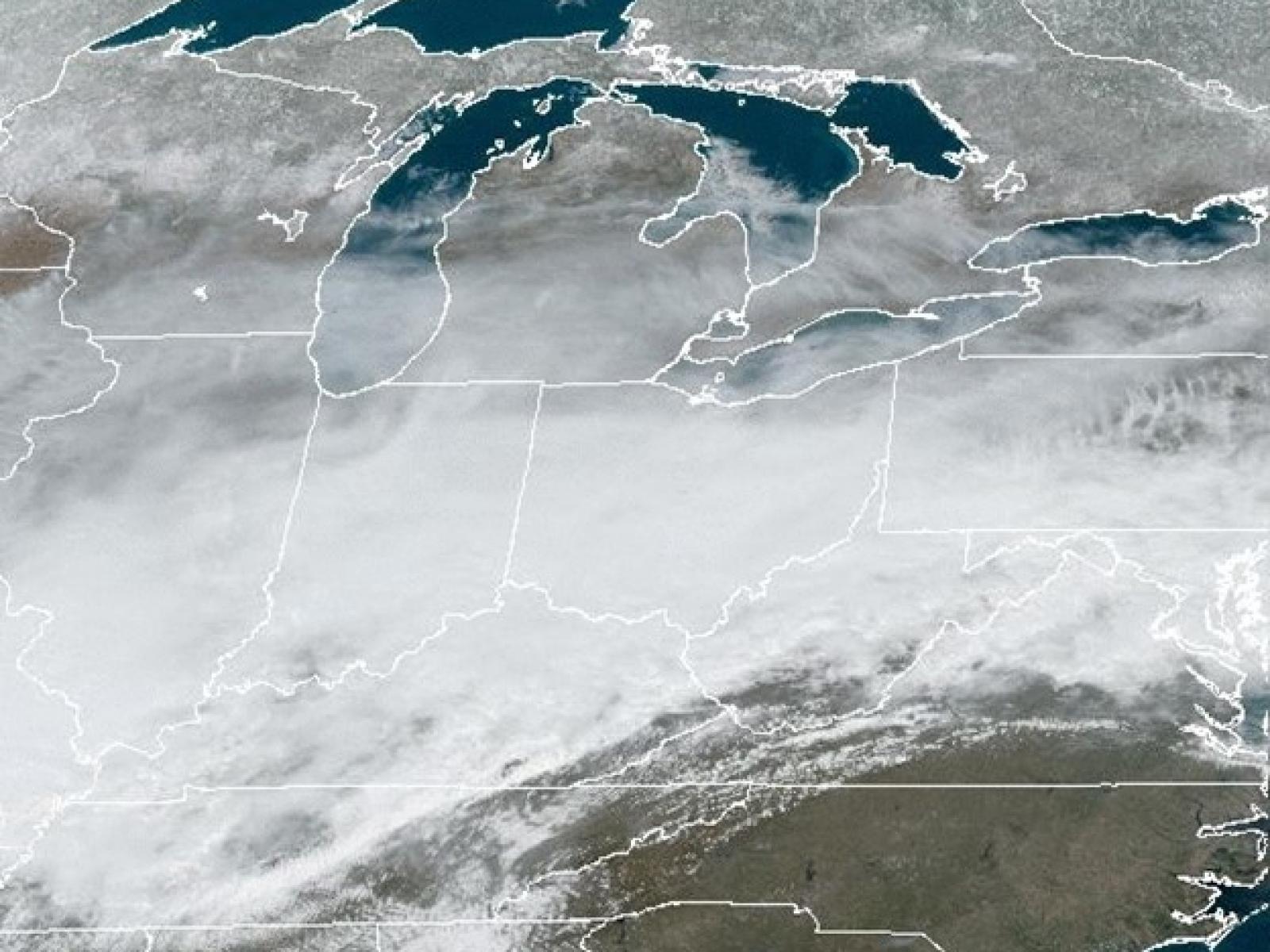Moisture Sources for Great Lakes Region Precipitation: Climatology and Recent Changes
The Great Plains and Great Lakes regions are the major sources of moisture for the precipitation that falls in the Great Lakes region

Understanding the hydrological cycle and precipitation moisture sources in the Great Lakes region is key to accurately projecting future water levels.
(Image from the GOES-East-Sector view of Great Lakes | National Oceanic and Atmospheric Association)
The Science
In the Great Lakes region (GLR), precipitation is an essential component of the net basin supply that drives lake water levels. Understanding the hydrological cycle and moisture sources is crucial to comprehending the historical hydroclimate and project future changes. Researchers quantified the moisture sources of the GLR and examined recent changes in the amount of moisture from each region. They found that the Great Plains (GPs) and GLR are the major moisture sources for precipitation that falls in the GLR. Moisture from the GPs contributes to more than 40% of strong precipitation in the GLR. The moisture contribution from the Mid-Pacific to precipitation in the GLR has a statistically significant increasing trend in spring.
The Impact
The Great Lakes are the world’s largest freshwater lakes. They provide water for many purposes, including drinking, irrigation, shipping, ecological habitats, hydroelectric power generation, and recreation. Understanding the hydroclimate over the GLR is essential because the lakes impact physical, ecological, economic, and cultural environments across North America. Variations in Great Lakes water levels can be attributed to changes in regional precipitation, overlake evaporation, lake interflows, and water withdrawal. Comprehending the hydrological cycle and precipitation moisture sources is crucial for learning about the historical hydroclimate and projecting future changes in the water level of the Great Lakes.
Summary
Researchers quantified the moisture contribution to precipitation over the GLR from different geographic locations. They used the Dynamic Recycling Model (DRM) with various reanalysis/analysis products to provide robust results. The DRM is a two-dimensional semi-Lagrangian analytical model that can quantify source regions of moisture on a daily basis. The results show that the GPs and GLR are the major sources of moisture for the precipitation that falls in the GLR. Moisture from the GPs contributes more to heavy precipitation, while moisture from the GLR contributes more to light precipitation. Research also found a statistically significant (p < 0.05) increasing trend in the moisture contribution from the Mid-Pacific due to an intensified zonal moisture transport from the Mid-Pacific caused by changes in atmospheric circulation.
PNNL Contact
Robert Hetland, Pacific Northwest National Laboratory, robert.hetland@pnnl.gov
Funding
This research is based on work supported by COMPASS-GLM, a multi-institutional project supported by the Department of Energy, Office of Science, Biological and Environmental Research as part of the Earth and Environmental Systems Modeling program. Computational resources are provided by the DOE-supported National Energy Research Scientific Computing Center. The Pacific Northwest National Laboratory is operated for DOE by Battelle Memorial Institute under contract DE-AC05-76RL01830.
Published: June 9, 2023
Yang, Z., Qian, Y., Xue, P., Wang, J., Chakraborty, T. C., Pringle, W. J., et al. 2023. “Moisture sources of precipitation in the Great Lakes Region: Climatology and recent changes,” Geophysical Research Letters, 50, e2022GL100682. [DOI: 10.1029/2022GL100682]